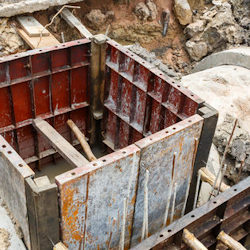Hazardous Atmospheres in Confined Spaces
OSHA 1926 Subpart AA applies to non-excavation work within a confined space located in an excavation.
These standards are intended to complement the excavation standard and address two distinct hazards:
- hazardous atmospheres in excavations and
- the additional hazards associated with confined spaces located within excavations.
For example, the Confined Spaces in Construction standard covers entry into a large prefabricated storm drain, other pipe, or manhole large enough for human occupation, even if located at the bottom of an open excavation.
If unhealthful atmospheric conditions exist or develop in an excavation or confined space, workers must exit immediately, and not reenter until testing proves safe levels have been achieved. Under no circumstance may workers enter an excavation when flammable/combustible atmospheres are present.
Emergency Rescue
Emergency rescue equipment is required when a hazardous atmosphere exists or can reasonably be expected to exist. Requirements are as follows:
- Respirators must be of the type suitable for the exposure. Employees must be trained in their use and a respirator program must be instituted.
- Attended (at all times) lifelines must be provided when employees enter bell-bottom pier holes, deep confined spaces, or other similar hazards.
- Employees who enter confined spaces must be trained.
Knowledge Check Choose the best answer for the question.
6-7. Which is an example of a non-excavation confined space within an excavation?
You forgot to answer the question!

